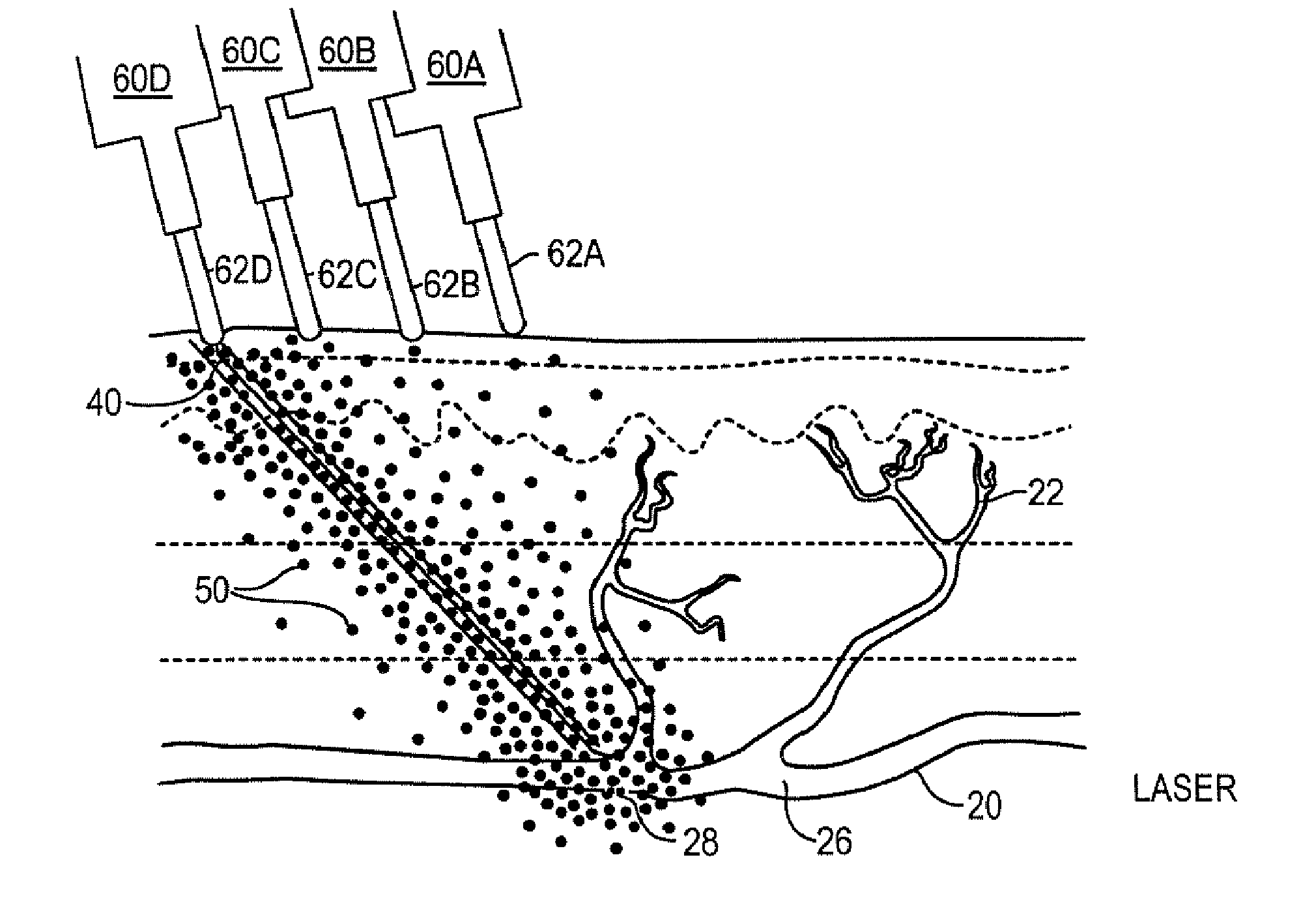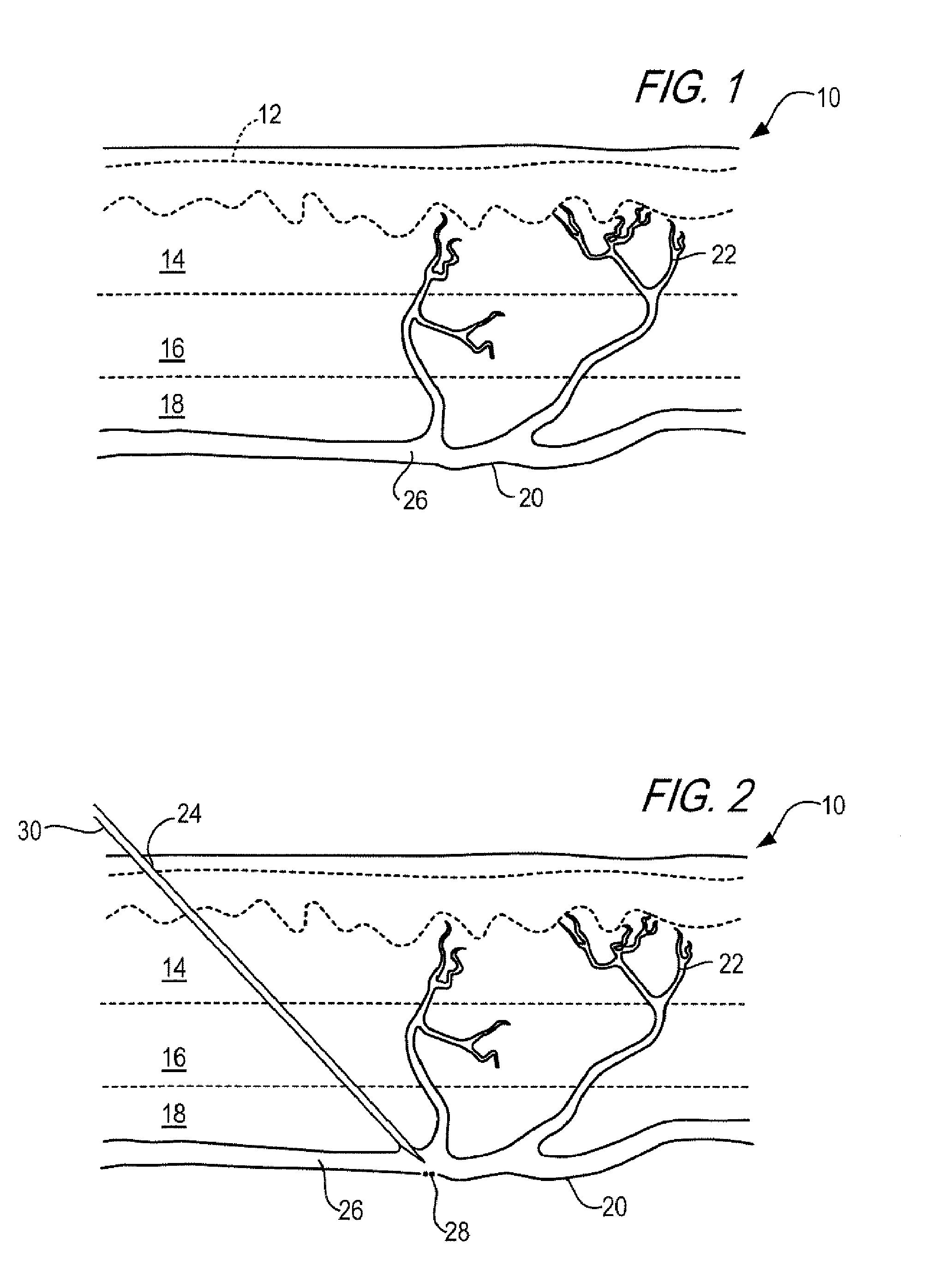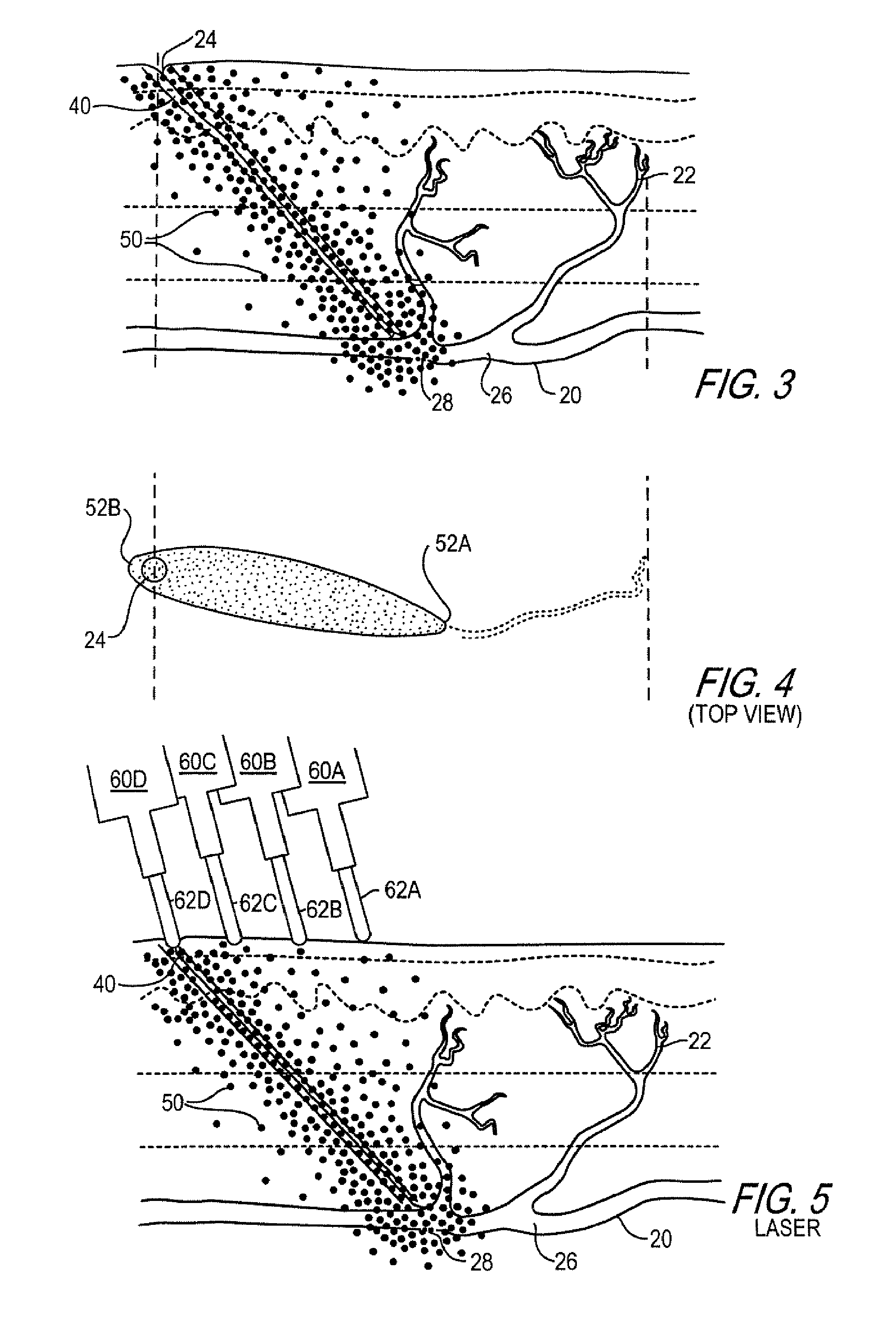Method and kit for treatment of varicose veins and other superficial venous pathology
- Summary
- Abstract
- Description
- Claims
- Application Information
AI Technical Summary
Benefits of technology
Problems solved by technology
Method used
Image
Examples
example
Actual Treatment of Patient
[0107]When all main trunk pathology has been treated by the appropriate technique, as well as all dependant, large reticular and perforator veins feeding a particular area of superficial venous pathology have been treated by sclerotherapy or other methods (mini-phlebectomy), the methods of the invention may be performed.
[0108]Sclerotherapy of the area of superficial venous pathology is performed in the usual manner: To treat reticular and feeder veins Sotradecol solution 0.3% is drawn in a 3 cc Becton Dickinson (BD) syringe. Using a 27-G-½ BD needle, sequential injections of 0.2-0.5 cc of the solution are injected along the length of the veins every 0.5-2 cm. To perform sclerotherapy of the telangiectatic veins, 0.1% Sotradecal, 0.3% Polydecanol, or 70% glycerin and lidocaine solution is drawn into a 3 cc BD syringe. Using a 30-G-½ BD needle sequential injections of 0.1-0.4 cc of solution are made every 0.2-0.5 cm along the length of the telangiectases.
[01...
PUM
 Login to View More
Login to View More Abstract
Description
Claims
Application Information
 Login to View More
Login to View More - R&D
- Intellectual Property
- Life Sciences
- Materials
- Tech Scout
- Unparalleled Data Quality
- Higher Quality Content
- 60% Fewer Hallucinations
Browse by: Latest US Patents, China's latest patents, Technical Efficacy Thesaurus, Application Domain, Technology Topic, Popular Technical Reports.
© 2025 PatSnap. All rights reserved.Legal|Privacy policy|Modern Slavery Act Transparency Statement|Sitemap|About US| Contact US: help@patsnap.com



